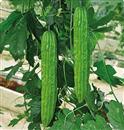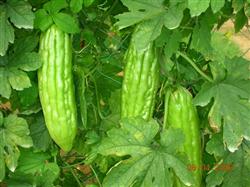Planting time and method of garlic
Garlic, also known as garlic, is a common condiment in our life. Some flavors or seasonings are added to stir-frying. In addition, it can also be used as medicine, has excellent anti-cancer effect, and is a rare health vegetable. But when will garlic be planted? How should I plant it? Let's take a look.

1. Planting time
Garlic is a crop that likes cold environment, so according to the climate and variety of each region. It can be divided into spring sowing and autumn sowing. In the northern region, the temperature in autumn and winter is relatively low, relatively cold, seedlings can not safely survive the winter, so it is not suitable for autumn sowing, through the method of raising seedlings in greenhouse, sowing in early spring and harvest in summer. In the south, the temperature is low, autumn and winter are warm enough, and the seedlings can survive the winter safely in the open air when sowing in autumn, so they are mainly sown in autumn.
2. Land preparation
Garlic is not strict on the soil, but it has a bumper harvest in the soil rich in organic matter, loose and fertile, and good drainage, so choose flat land for planting. Before planting, the land should be prepared, the soil should be ploughed deeply for 20-25cm, and then the soil should be raked fine and flat, with no obvious stones or clods. If you make a border again, the border is about 1 meter long and 4 meters wide, and you can also hit a border that is 50cm long and 4 meters wide, depending on the actual situation.
3. Sowing seeds
Select the garlic with large size and good color, use artificial peeling and breaking, remove the trays and stem plates of the garlic, grade the garlic cloves, and choose the garlic cloves with large grains, pure white appearance, no damage and no light skin as seeds. Each clove is required to weigh up to 5 grams, and the size of the seed is related to the yield, so try to choose the seed with large particles. Sowing and drying the seeds for a day or two to improve the germination rate, be careful not to choose in the high temperature period, in the temperature of 15-17 degrees, the climate is cool, the sun is not strong, if you dry the seeds when the sun is strong, the seeds may be directly dried to death. The furrow depth is 4-5cm, the row spacing is 20 × 16cm, and 1-2 seeds are sown in each ditch. After sowing, the soil is covered with a layer of thin soil after 1cm, and the soil is moistened by watering.
4. Field management
Garlic crops that need a lot of water should keep the soil in order to make them grow rapidly. generally, they should be watered four times during the whole growth period, and after one sowing, they can germinate as soon as possible; the second seedling stage can promote the rapid growth of seedlings; the third moss stage can promote the growth of garlic moss; four times in the bulb expansion period, the bulb expansion moisture should be increased to avoid poor bulb growth. At the same time, in order to achieve high yield, fertilization is also essential, the principle of fertilization is mainly machine fertilizer, a small amount of chemical fertilizer; base fertilizer, supplemented by topdressing. When planting, the mature organic fertilizer 5000kg is applied per mu, and when mixed with appropriate amount of compound fertilizer, it is evenly scattered on the ground, and the soil can be evenly mixed during deep ploughing; topdressing can be combined with watering. In addition, it is necessary to plough weeds, increase soil permeability, prevent weeds from grabbing nutrients, and strengthen the prevention and control of diseases and insect pests.
The above are the planting time and methods of garlic. I hope it can help you. If you want to know more about garlic planting, please follow us.
- Prev

It is not advisable to apply topdressing to balsam pear.
At present, the common way of topdressing for vegetable farmers who grow balsam pear is to apply fertilizer with water, which can evenly apply fertilizer to the soil, but it is not advisable to use this way of topdressing. The reason is that the planting density of balsam pear is relatively small, with only 200 to 300 plants per mu and 3 to 6 plants per row.
- Next

Four key points of high-yield cultivation of spring balsam pear
Balsam pear fruit is rich in vitamin C, higher than tomato, and contains a glycoside with a special bitter taste, is one of the popular health vegetables. Planting spring balsam pear has the advantages of light disease, low cost, high yield and good benefit. The high-yield cultivation techniques of spring balsam pear mainly have the following four key points: selecting improved varieties and raising seedlings at the right time. Spring seed.
Related
- Where is it suitable to grow horseradish in China? it is expected to see the middle altitude horseradish in Alishan.
- How to prevent tomato virus disease reasonably? (Control methods included)
- Many people like to plant towel gourd on the balcony. What are the main points of this method and management?
- What crops can chili peppers be mixed with?
- Fertilization techniques and matters needing attention in Tomato
- What are the grafting techniques for peach seedlings in spring?
- Harm and control methods of root swelling disease of Chinese cabbage
- What are the pests of sweet potatoes? How to prevent and cure it?
- Symptoms, causes and Control methods of navel Rot in Tomato
- The cause of "Cucumber rotten bibcock" in Farmers' planting Cucumber and its Control Plan

